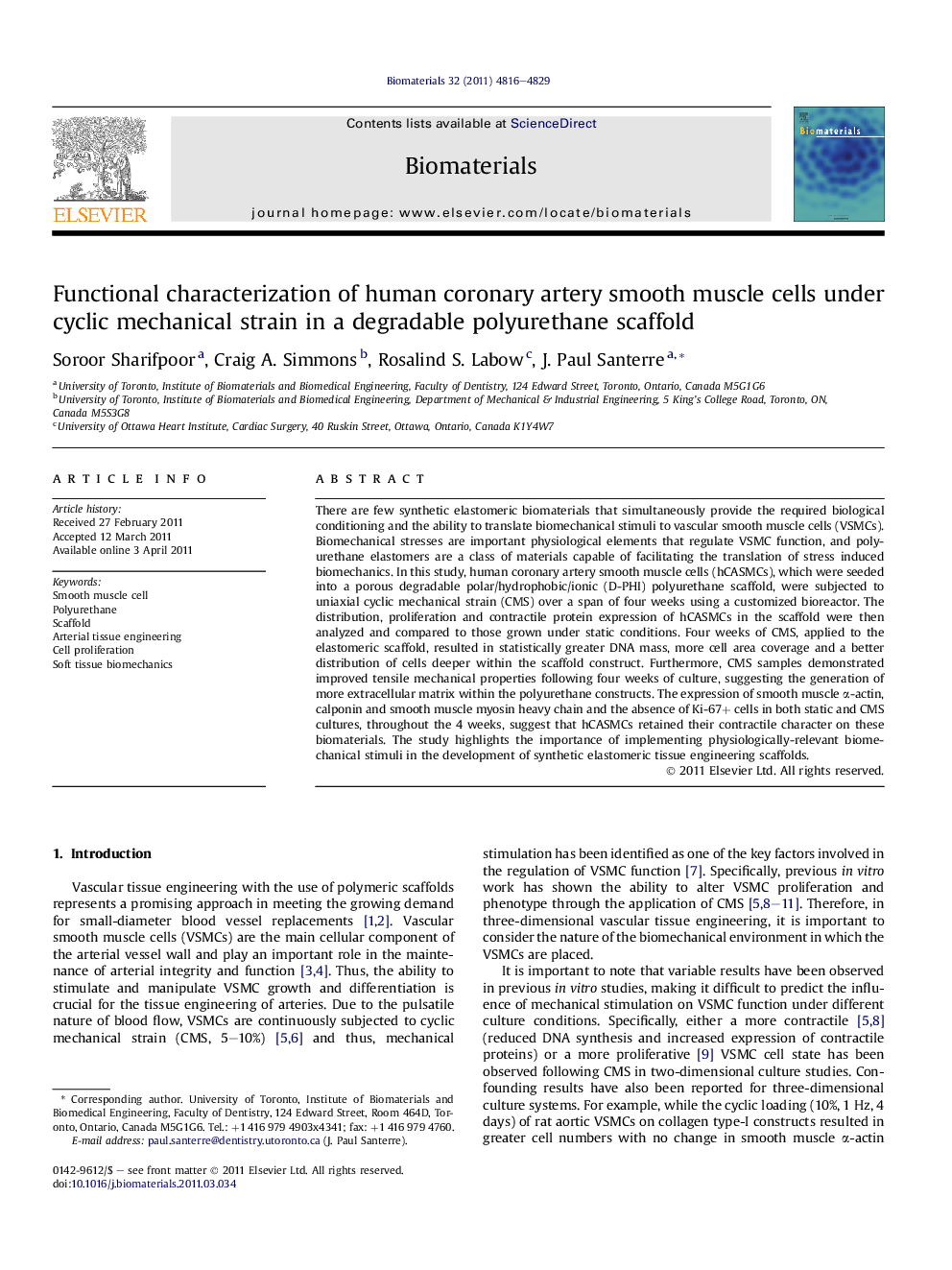| کد مقاله | کد نشریه | سال انتشار | مقاله انگلیسی | نسخه تمام متن |
|---|---|---|---|---|
| 7552 | 556 | 2011 | 14 صفحه PDF | دانلود رایگان |

There are few synthetic elastomeric biomaterials that simultaneously provide the required biological conditioning and the ability to translate biomechanical stimuli to vascular smooth muscle cells (VSMCs). Biomechanical stresses are important physiological elements that regulate VSMC function, and polyurethane elastomers are a class of materials capable of facilitating the translation of stress induced biomechanics. In this study, human coronary artery smooth muscle cells (hCASMCs), which were seeded into a porous degradable polar/hydrophobic/ionic (D-PHI) polyurethane scaffold, were subjected to uniaxial cyclic mechanical strain (CMS) over a span of four weeks using a customized bioreactor. The distribution, proliferation and contractile protein expression of hCASMCs in the scaffold were then analyzed and compared to those grown under static conditions. Four weeks of CMS, applied to the elastomeric scaffold, resulted in statistically greater DNA mass, more cell area coverage and a better distribution of cells deeper within the scaffold construct. Furthermore, CMS samples demonstrated improved tensile mechanical properties following four weeks of culture, suggesting the generation of more extracellular matrix within the polyurethane constructs. The expression of smooth muscle α-actin, calponin and smooth muscle myosin heavy chain and the absence of Ki-67+ cells in both static and CMS cultures, throughout the 4 weeks, suggest that hCASMCs retained their contractile character on these biomaterials. The study highlights the importance of implementing physiologically-relevant biomechanical stimuli in the development of synthetic elastomeric tissue engineering scaffolds.
Journal: Biomaterials - Volume 32, Issue 21, July 2011, Pages 4816–4829